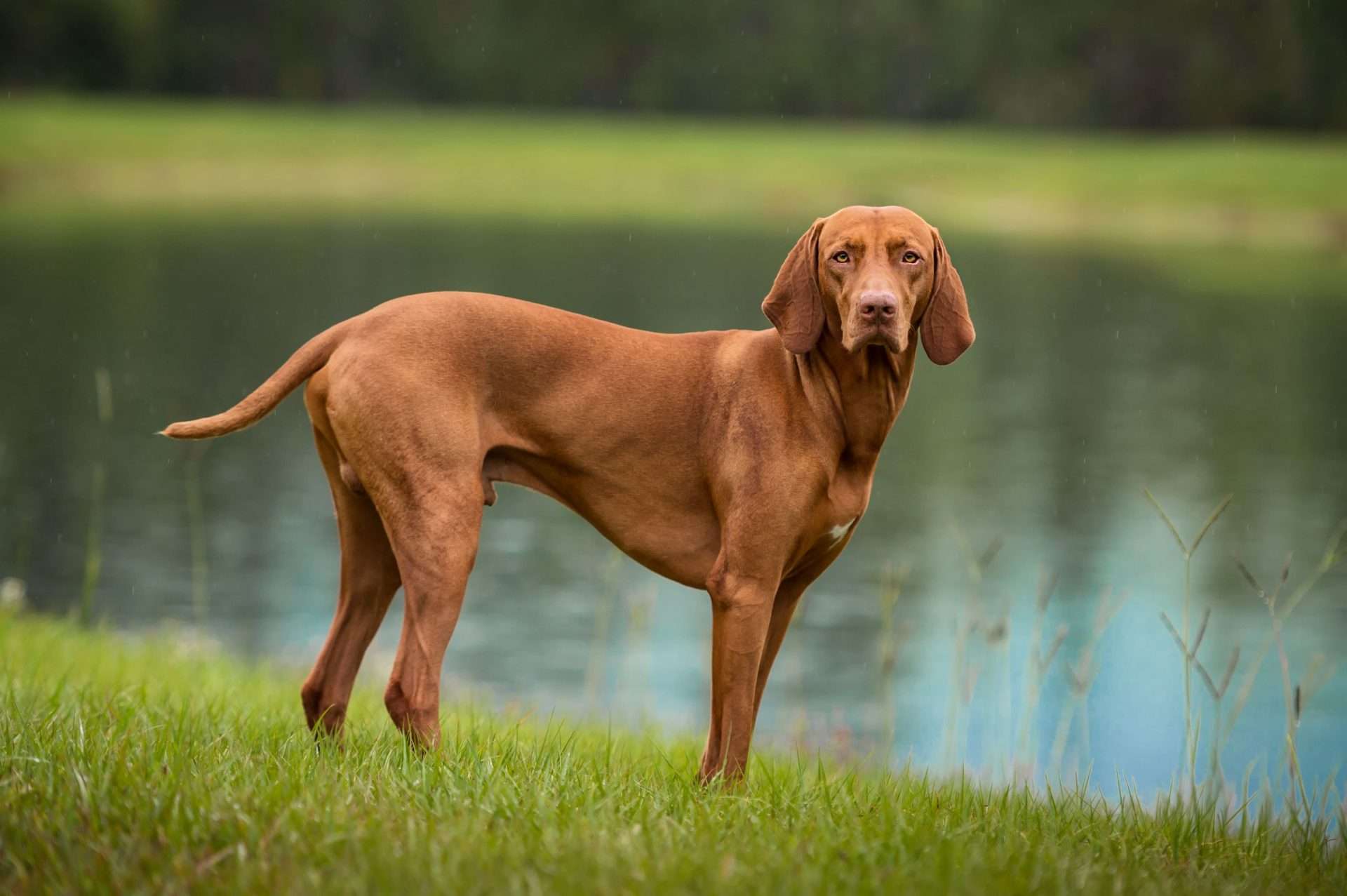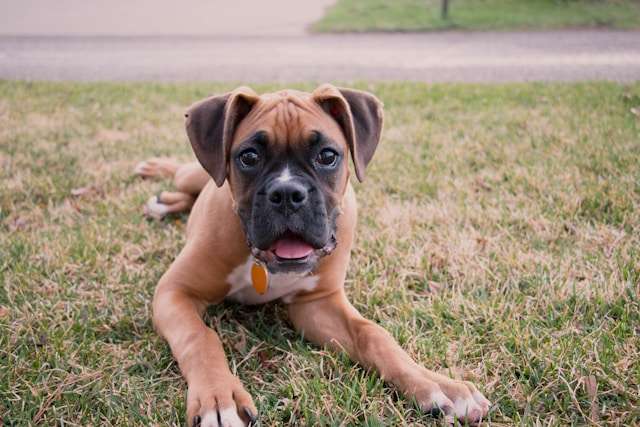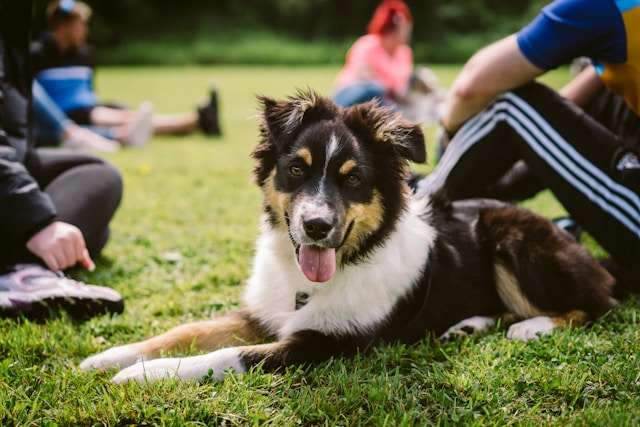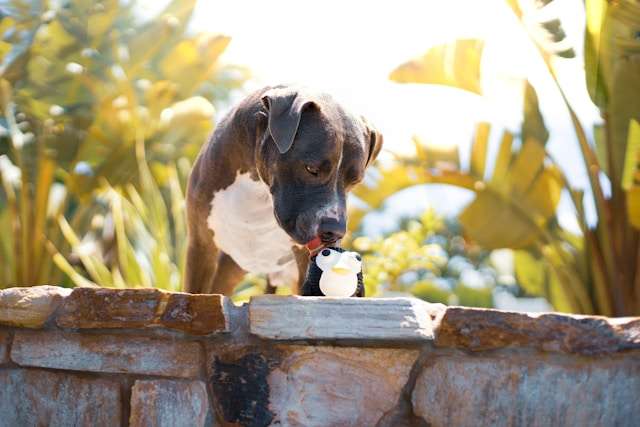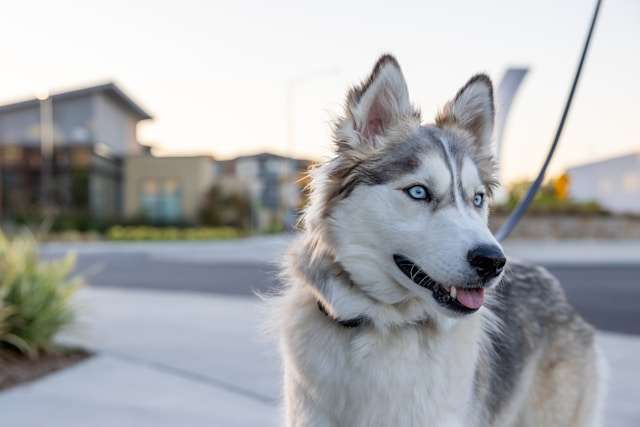Vislaz Dog Breed Guide: History, Traits, Care, and Training Tips
Vislaz Vislaz Dog Breed Guide: History, Traits, Care, and Training Tips Guide: History, Traits, Care, and Training Tips. Are you curious about a dog breed that’s intelligent, loyal, and full of energy? The Vislaz—sometimes spelled Vizsla—is a standout companion for active families and individuals.
Known for their stunning rust-colored coats and adaptable nature, these dogs are as affectionate as they are versatile. In this guide, you’ll learn about their history, personality traits, care requirements, and expert training tips to keep your Vislaz happy and healthy.
Table of Contents
History of the Vislaz Breed
The Vislaz, also known as the Vizsla, is more than just a beautiful breed; it has a rich, fascinating history. From its early use as a hunting companion to its evolution into a beloved family dog, the story of the Vislaz is one of resilience and adaptability.
Origin and Historical Background
The Vislaz traces its roots back to Hungary, where the breed was first developed over a thousand years ago. Originally bred by Magyar tribes, these dogs were prized for their speed, agility, and keen hunting instincts. They were utilized primarily as hunting companions for catching game and birds, making them a favorite among Hungarian nobility. Their loyalty and affectionate nature also made them excellent companions, earning them a place in the homes of aristocrats.
One of the earliest historical references to the breed can be found in the Illustrated Vienna Chronicle, dating back to the 14th century. This ancient document highlights the Vislaz’s importance in hunting and noble society. By the 19th century, the breed had become one of the most iconic dogs in Hungary.
Want to dive deeper into their historical significance? Check out Vizsla History: The Swift Hungarian Hunting Dog.
Evolution of the Breed
The breed faced numerous challenges, including near extinction during World War II, when their numbers dwindled drastically. However, efforts by dedicated breeders helped ensure their survival. Over time, the Vislaz adapted not only to hunt but also to serve as family pets and even therapy dogs.
In the modern era, the Vislaz has evolved into a versatile breed, excelling in roles such as search-and-rescue, therapy, and obedience competitions. Their natural athleticism and trainable nature make them ideal for active families and individuals who value work and play.
The rust-colored coat that defines the breed today is a trait that has remained relatively unchanged over centuries, reflecting their Hungarian heritage and making them instantly recognizable.
For more about their evolution, visit Breed History.
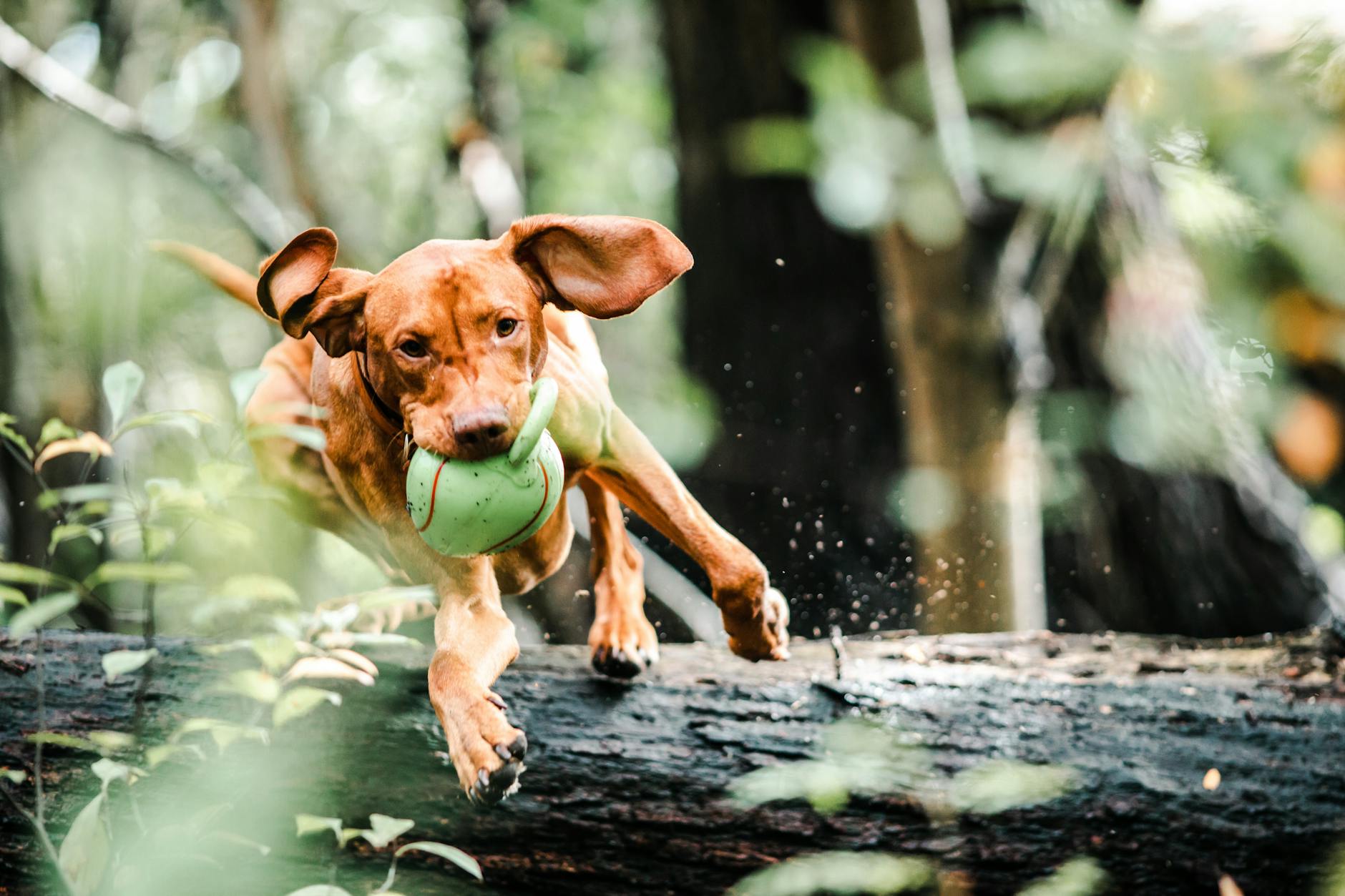
Photo by chepté cormani.
Recognition by Kennel Clubs
The Vislaz gained international recognition starting in the mid-20th century. The American Kennel Club (AKC) officially recognized the breed in 1960, marking a significant milestone in its global reputation. Additionally, the United Kennel Club (UKC) followed suit by recognizing the Vislaz in 1984. Across the globe, organizations such as The Kennel Club in the UK also acknowledge the breed under the name Hungarian Vizsla.
These milestones have further solidified Vislaz’s standing as a premier hunting and companion dog.
You can refer to Vizsla Dog Breed Information for detailed breed standards and information.
Physical and Personality Traits
The Vislaz, often called the Hungarian Vizsla, is a breed that captivates dog lovers with its striking looks, energetic personality, and deep connection to its family members. Understanding their physical traits and personality can help you build a stronger bond with this versatile breed.
Appearance
The Vislaz is undeniably elegant and athletic. They are a medium-sized breed, boasting a sleek and muscular frame designed for endurance and agility. An adult Vislaz typically stands 21 to 24 inches tall at the shoulder and weighs 45 to 65 pounds, with males slightly larger than females.
Their rust-colored coat is one of the breed’s most defining features. This short, dense coat is smooth and requires minimal grooming, perfect for those who appreciate a low-maintenance dog. Their ears are long and velvety, drooping gracefully beside their face, while their eyes often match their coat, giving them a distinct, soulful look.
Some key physical traits include:
- Toned Build: A body that’s built for both speed and stamina.
- Nose and Eye Coordination: Their nose matches their coat, a unique characteristic.
- Distinctive Tail: Typically docked around 1/3 of its length for hunting, though regulations may vary by location.
Explore their appearance and breed standards in the Hungarian Vizsla Breed Guide.
Temperament
If a Velcro dog sounds intriguing, the Vislaz fits the bill! These dogs are renowned for their close attachment to their human companions. They’re affectionate and loyal and thrive in environments where they can feel like full-fledged family members.
They are naturally gentle and playful, making them great with kids and other pets. However, they can sometimes be shy or cautious towards strangers. Proper socialization from a young age is crucial to developing a confident and well-adjusted Vislaz.
Key personality traits include:
- High Energy: Always ready for a jog, hike, or game of fetch.
- Smart Problem-Solvers: They’re quick learners but can test boundaries if not trained consistently.
- Affectionate: Known as “Velcro dogs,” they love staying close to their people.
Read more about their personality in Vizsla Dog Breed Information.
Health and Lifespan
The Vislaz is generally considered a healthy breed with a life expectancy of 12 to 14 years. However, like all breeds, they can be predisposed to certain hereditary conditions. Knowing these early can help you plan preventive care and ensure your pet’s long, happy life.
Common health concerns include:
- Hip Dysplasia: A genetic joint condition that can cause discomfort and mobility issues.
- Epilepsy: Some Vislas may experience epilepsy-related seizures.
- Allergies: They can be prone to skin allergies or sensitivities.
Preventive care tips:
- Schedule regular vet check-ups to monitor for early signs of genetic conditions.
- Feed a balanced diet rich in protein to support their active lifestyle.
- Invest in regular exercise—they need physical and mental stimulation daily to stay healthy.
Looking out for their health? Learn more from What to Know About Vizslas.
This section dives into the unique traits and care needs of the Vislaz. From their eye-catching appearance to their loving personalities and health considerations, any owner will enjoy embracing this vibrant breed.
Care Requirements
Caring for a Vislaz involves understanding their needs for diet, exercise, grooming, and living conditions. Meeting these requirements ensures a healthy, happy, and well-adjusted pet.
Diet and Nutrition
A well-balanced diet is essential for Vislaz’s active lifestyle. They require high-quality food rich in proteins, healthy fats, and complex carbohydrates to support their energy and growth needs. Ideal protein sources include chicken, turkey, beef, or fish. Fats provide energy, while carbs fuel daily physical activities.
- Adult Vislas: Need around 2 ½ to 3 ½ cups of premium kibble daily, divided into two meals.
- Puppies: They require more frequent meals, about three to four times daily, to support their rapid growth.
- Foods to Avoid: Clear foods containing artificial additives, chocolate, onions, or fatty scraps. These can harm their digestion or health.
For more detailed guidance, check out the Vizsla Feeding Guide.
Exercise Needs
Vislas are high-energy dogs that thrive on activity. On average, they need at least 1.5 to 2 hours of exercise daily. Think of them as the marathon runners of the dog world—they love extended, intense physical activities.
Excellent forms of exercise include:
- Daily walks or jogs
- Hiking adventures
- Playing games like fetch or agility training
- Mental stimulation activities, such as puzzle toys or hide-and-seek games
If under-exercised, they may become restless or destructive. Learn more about their activity levels here: How Much Exercise Does a Vizsla Need?
Grooming
Vislas are low-maintenance regarding grooming. Their short, rust-colored coat doesn’t tangle or mat easily, but they still benefit from regular care.
- Brushing: Once a week with a soft-bristle brush to remove loose fur and maintain a healthy sheen.
- Bathing: Use a dog-specific shampoo to avoid skin irritation every 8–12 weeks or as needed.
- Dental Hygiene: Brush their teeth 2–3 times weekly to prevent tartar build-up and gum disease.
- Nail Trimming: Check their nails monthly and trim if they start clicking on hard floors.
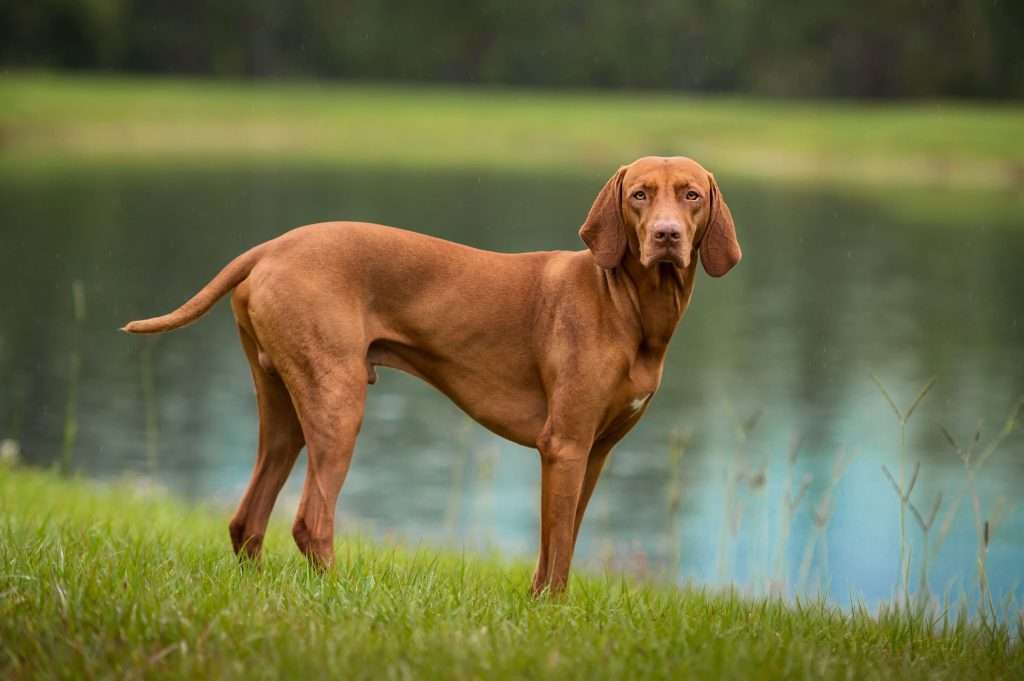
Photo by Goochie Poochie Grooming.
Discover more grooming tips from How to Groom a Vizsla.
Living Environment
The ideal home for a Vislaz is one where they have plenty of space to roam and play. They are best suited to houses with:
- A fenced backyard for free movement and safety
- Access to parks or open spaces for off-leash running
- Indoor areas where they can stay close to their family—as they’re the ultimate “Velcro dogs.”
Apartment living is not impossible but requires extensive outdoor time daily. A bored or confined Vislaz might develop destructive habits. Learn more about setting up a suitable home for your pup at Living with a Vizsla.
By catering to their dietary, exercise, grooming, and living needs, you’ll ensure that your Vislaz thrives in an environment where they can channel their energy, intelligence, and affectionate nature into being the perfect companion.
Training Tips
Training your Vislaz can be both rewarding and challenging. This breed is known for its intelligence and strong bond with humans, which means they are highly trainable—but their energy levels can sometimes be overwhelming. Patience, consistency, and positive reinforcement best turn Vislaz into a well-behaved and happy companion.
Basic Training Essentials
Starting with the basics ensures a calm and obedient Vislaz. Here are key methods to focus on:
- Housebreaking: Establish a regular schedule, using positive reinforcement for success. Take your pup outside first thing in the morning, after meals, and before bedtime. Accidents happen—stay patient. Praising or rewarding correct behavior creates quick learning connections.
- Crate Training: Make the crate a safe and comfortable spot. Add a soft blanket and chew toys inside. Encourage your Vislaz to explore it voluntarily by placing treats inside. Never use the crate as punishment—it should feel like their personal den.
- Teaching Commands: Start with basic commands like “sit,” “stay,” and “come.” Use one-word cues paired with clear hand signals. Pair commands with small food rewards or toys. Once they master the basics, you can gradually phase out treats to reinforce good habits.
Struggling to get started? You’ll find helpful beginner tips at Vizsla Training Tips.
Socialization
Socialization is critical to prevent your Vislaz from becoming shy or overly protective. Proper exposure to different settings, people, and environments during their early months builds their confidence.
- Introduce New Experiences Gradually: Take your pup to busy parks, invite friends over, or visit pet-friendly stores. Keep these interactions positive and stress-free.
- Dog-to-Dog Play: Arrange supervised playdates with other dogs of various sizes and temperaments. This helps your Vislaz learn canine social cues and manners.
- Positive Encouragement: Reward calm and friendly behavior with treats or praise. If your pup shows fear, step back and reintroduce the situation more slowly.
Learn more about the role of socialization in a dog’s mental health at Friendship with Benefits: The Importance of Socialization.
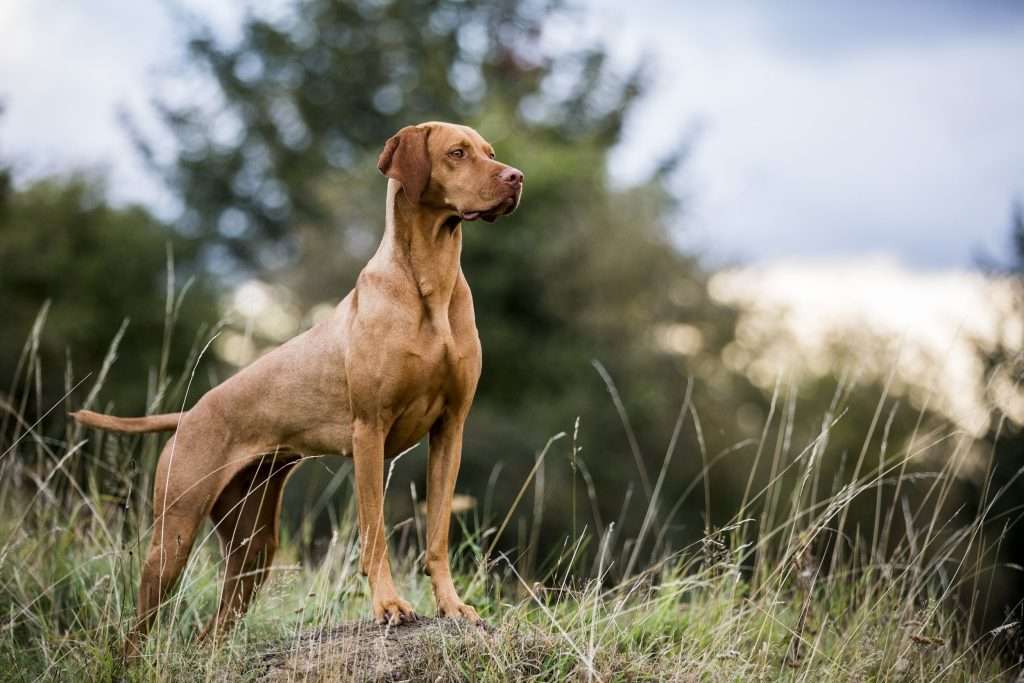
Photo by Blue Bird.
Advanced Training Options
Once basic training is solid, Vislaz dogs excel in advanced training programs. Their intelligence and energy make them ideal candidates for higher-level challenges.
- Obedience Classes: Enroll your Vislaz in an advanced obedience course. These classes refine their existing skills and introduce new ones, like extended stays and recall from distractions. Programs like Advanced Obedience Class offer structured approaches.
- Advanced Commands and Tricks: Teach skills like retrieving specific items, rolling over, or playing dead. Use consistent cues, patience, and frequent rewards.
- Activity-Based Training: Consider agility training or canine sports. Activities like scent work and flyball challenge their minds and burn excess energy. Both you and your Vislaz will enjoy bonding through these fun, action-packed sessions.
Explore other advanced training options at AKC Advanced Dog Training Tips.
Training a Vislaz may require effort, but their eagerness to learn and affectionate nature make the process enjoyable and fulfilling.
Common Questions About Vislaz Dogs
Vislaz dogs, sometimes called Hungarian Vizslas, are intelligent, affectionate, and energetic companions. While loved for their loyalty and active nature, many people question their specific needs and behaviors. Let’s address some of the most common questions about this incredible breed.
Exercise Requirements: How much exercise does Vislaz need daily?
Vislaz dogs are highly energetic and require at least 1.5 to 2 hours of exercise daily. This isn’t limited to a quick walk around the block—they love running, hiking, and engaging in high-energy games like fetch or agility training. Mental stimulation is equally critical; puzzle toys and scent-tracking activities keep their minds active.
Without sufficient exercise, Vislaz can become restless and display destructive behavior. If you’re active and outdoorsy, they’ll gladly match your pace, even on long runs. For more details, check out this guide to Vislaz exercise needs.
Compatibility with Children: Are Vislaz dogs good with kids?
Vislaz dogs are often described as “gentle giants” around kids. They’re affectionate, playful, and protective, making them an excellent match for families. However, their high energy might overwhelm very young toddlers unless supervised. Early socialization will help teach them how to behave appropriately around children.
Due to their loyalty, they’ll often treat children like their pack members, sticking close and joining in on family games. To read more about their compatibility with children, check out this resource.
Shedding Concerns: Do Vislaz dogs shed a lot?
Vislaz dogs have a short, sleek, relatively low-maintenance coat, but they do shed moderately. Their hair is fine and may not be as noticeable as breeds with thicker coats, but regular grooming can help manage shedding.
Here are a few tips for coat maintenance:
- Brush weekly with a soft-bristle brush.
- Bathe as needed, typically every 6–8 weeks.
- Use lint rollers for furniture and clothes.
If shedding is a concern, you can manage it effectively. Learn some helpful strategies in this guide on Vizsla shedding.
Health Problems: What are the common health problems in this breed?
While Vislaz dogs are generally healthy, there are a few health issues they’re prone to:
- Hip Dysplasia: A common joint issue in active breeds.
- Epilepsy: Seizures can occur in some Vislaz dogs.
- Progressive Retinal Atrophy (PRA): A genetic condition causing vision loss.
- Skin Allergies: These may appear as itching or redness, often manageable with a vet-recommended diet or treatment.
Regular vet check-ups and preventive care can address most concerns early. Find out more in this comprehensive health guide for Vislaz dogs.
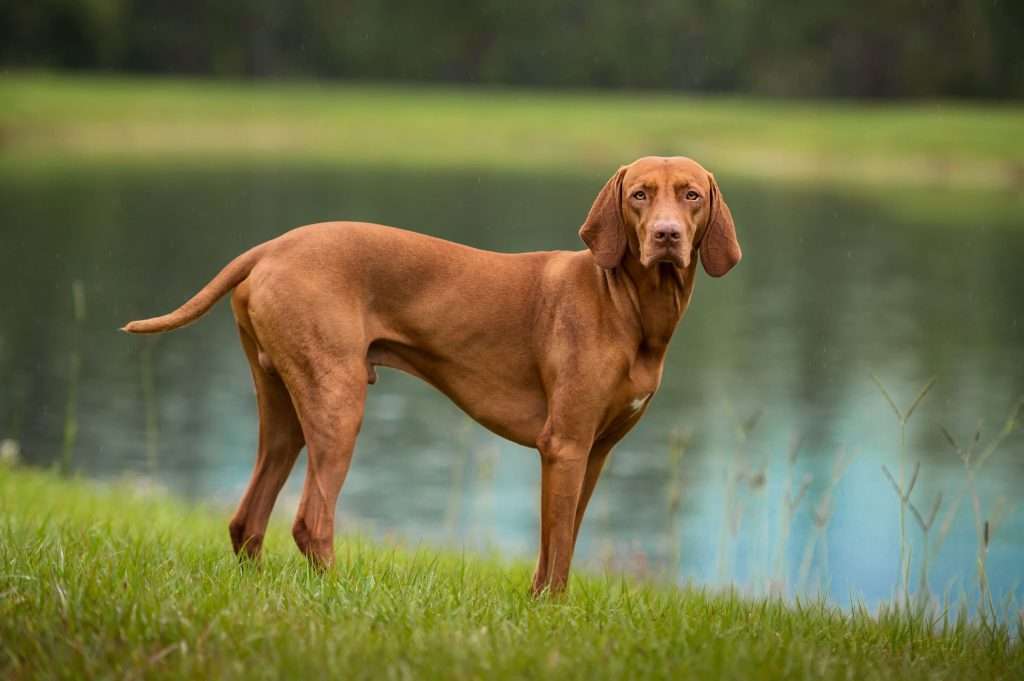
Photo by Mikhail Nilov.
Lifespan: How long do Vislaz dogs live?
The typical lifespan of a Vislaz ranges from 12 to 14 years. With proper care, some even live into their mid-teens. A high-quality diet, regular exercise, and routine veterinary visits will help ensure your pup lives a long, healthy life.
If you’re curious about factors affecting their lifespan, check this resource.
Trainability: Are they easy to train?
Vislaz dogs are intelligent and eager to please, making them relatively easy to train. However, they can be stubborn or distracted due to their curiosity. Start training early, using positive reinforcement techniques such as treats and praise. Consistency is key—they thrive on routine.
For advanced training, they excel in activities like obedience, agility, and scent work. Learn more about effective training methods here.
Energy Levels: What is the Vislaz breed’s energy level compared to other dogs?
When it comes to energy, Vislaz dogs are among the highest-energy breeds. They love non-stop play and thrive on activities that challenge both their body and mind. Compared to breeds like Labrador Retrievers or Golden Retrievers, Vislaz dogs are even more intense in their activity levels.
If you’re prepared to meet their needs, they’re an endlessly entertaining and loyal companion. Read this comparison of energy levels here.
Apartment Living: Can Vislaz dogs adapt to apartment living?
While they’re adaptable, Vislaz dogs aren’t an ideal fit for apartment living unless their exercise needs are consistently met. Daily walks, off-leash runs, and plenty of interaction help them thrive even in smaller spaces. They may become restless or exhibit undesirable behaviors like chewing without enough exercise.
If you live in an apartment, being committed to their outdoor activities is essential. For tips on making apartment living work, explore this resource.
These answers cover the most common questions about Vislaz dogs, helping you determine if their unique traits align with your lifestyle. More than just pets, Vislaz dogs are steadfast companions, ready to bring energy, loyalty, and joy to your life.
Conclusion
The Vislaz, or Hungarian Vizsla, is an exceptional breed known for its intelligence, energy, and loyalty. Their rich history, distinct traits, and versatile abilities make them stand out as hunting companions and loving family pets.
Owning a Vislaz requires an active lifestyle, consistent training, and a commitment to proper care. From their unique rust-colored coats to their “Velcro dog” personalities, they bring unmatched companionship to dedicated owners.
Are you thinking of welcoming one into your life? Dive deeper, research thoroughly, and ensure your home is ready for this incredible breed. Share your thoughts or personal experience with Vislaz dogs—we’d love to hear them!

